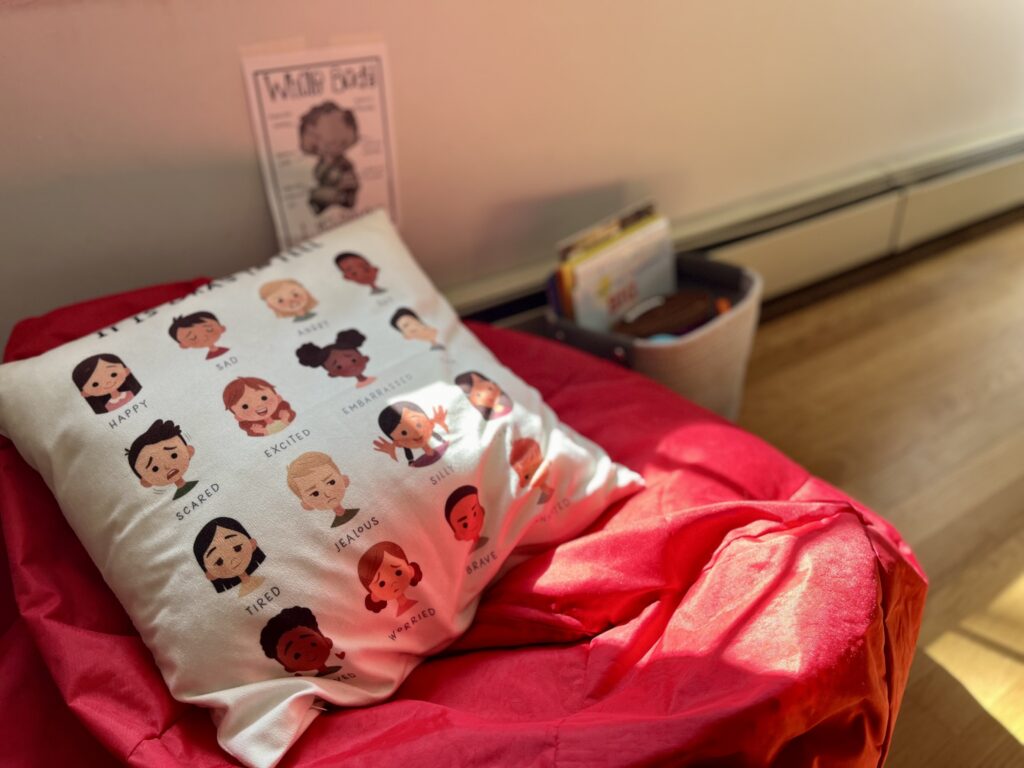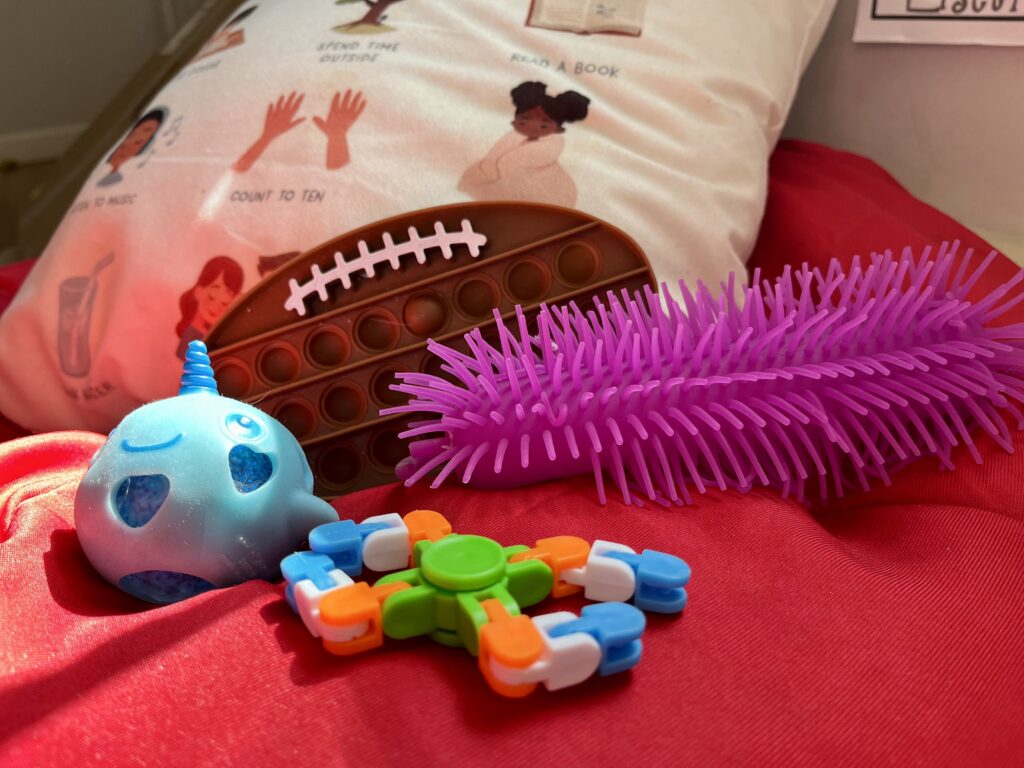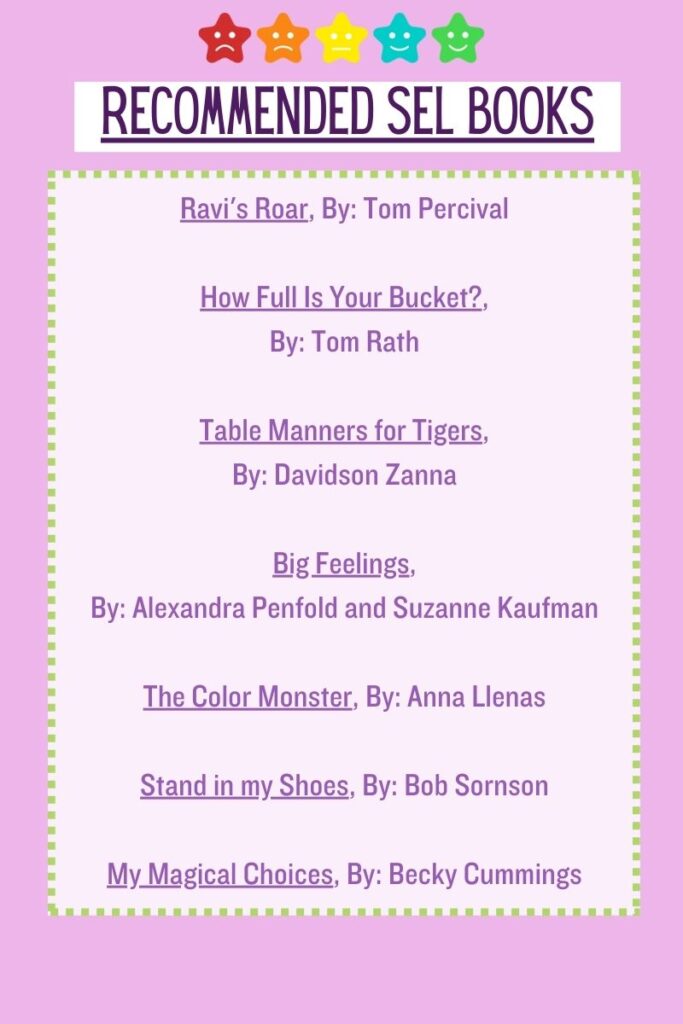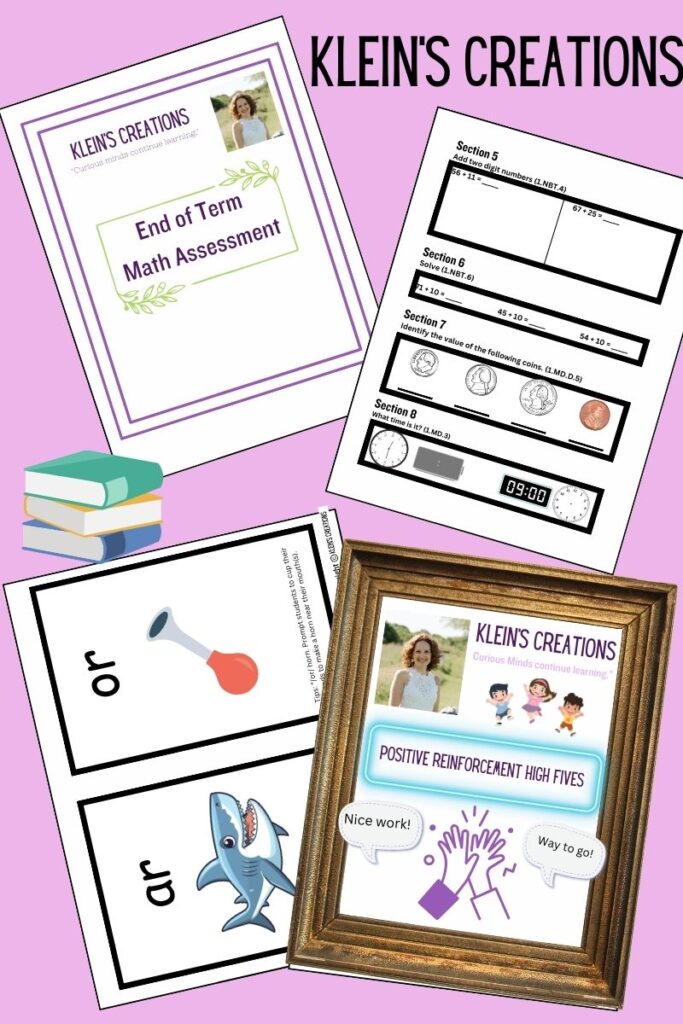Are you struggling at home with your child? Are they having difficulty regulating their emotions? A calm down space might be just what you need!
By: Michelle Klein

Sometimes my teaching brain and parenting brain take longer to communicate with each other than I care to admit. I often forget to use some of my classroom management strategies at home with my own children. Whose with me? Blame it on a long day. Blame it on a tired brain. Blame it on a lack of cupcakes. Whatever the reason (head smack) it happens.
With my oldest, we used a traditional “time-out” area. This was often a punishment in response to an undesirable behavior. We would always process afterwards. However, the problem was if they went to time-out for what I call “wild and unruly” behavior – they rarely calmed down. Instead, they just kept extending their visits to the time-out step. Then, something magical happened after I had my third baby. Ureeka! My teaching brain and parenting brain had a moment where they actually communicated. Why not create a calm down space inside my home just like I use in my classroom? What worked with my students could surely work with my own children! Sometimes I simply amaze myself and sometimes I give myself a headache.
So, I got to work. I setup a bean bag (flex seating ✅), I collected a number of fidget items (squish balls, stuffed animals, pop-it’s) and some of our favorite social emotional learning books. I put all the items in a basket and bought the pillow shown in the photo to the right. This pillow is epic. One side lists a number of feelings and the other listed a bunch calm down strategies with pictures. We use this to process our feelings and make a choice about how to calm down. This is a great tool for children who are too upset to articulate their feelings or needs. They can simply point to a picture to communicate. I remember hearing at a workshop that when someone is emotionally distraught, their mental age decreases by half and the first thing to go is their short-term memory. This means my four year old son, M, is mentally a two year old when he is in the middle of a tantrum. Changes your perspective, doesn’t it? It’s incredibly unfair and totally unrealistic of me to expect someone who is mentally a two year old to rationally communicate about their feelings. Instead, M needs to calm down before we can effectively process.



So here is how it works in the day to day:
- Child has undesirable behavior.
- I name the undesirable behavior and tell the child they need a time-out to calm down.
- Child goes to the calm down space. If they go angrily (stomping and throwing things around) all this does is earns them another minute to calm down. It’s not a punishment. It’s a logic consequence.
- I check in. We name their emotion using the pillow and talk about which strategy they would like to use to calm down. If they are very agitated, they can point to the picture or I can pick a strategy for them. Sometimes they just need a hug.
- I set a timer and explain they must stay for the timer, but when the timer is up – they can leave when they are ready. Timer is set for one minute.
- When they exit time-out, we process what happened. For example, what made them upset? Their feelings are valid, but the behavior is unacceptable. What could we do differently next time? What amends do we need to make? (This includes me. If I got angry and yelled, I need to apologize too.)
- For repeat behaviors, I add an additional minute. For example, J jumps on the couch even though this is a strict rule in our home. He’s sent to time-out to calm down and process. Five minutes later, something very similar happens. This time he goes to time out for two minutes. He obviously needs more time. Again, it’s a logical consequence and not a punishment.
So, here is what happened…My children started using the time-out space all by themselves. If they felt they were getting “wild and unruly” they would check themselves into time-out or stay long after the timer went off. Say what? It’s true. They started to recognize they needed a little time to themselves and “time-out” was no longer a punishment, but rather a form of self-care. Imagine that 😏.
As always, please take what you like from my experience and leave the rest. I hope you find something useful!



One response to “Social Emotional Learning Strategies – Practical Creation of a Calm Down Space at Home”
What a great read, Michelle! Great suggestions for young families.
Keep writing, keep sharing!!
Well done!